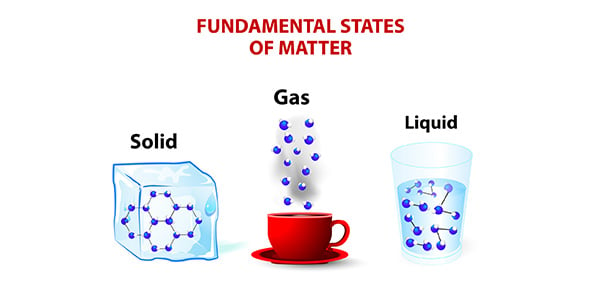7 States Of Matter

Year 7 Science test in the area of states of matter, particle theory and properties of water
- 1.
All matter is made up of tiny particles.
- A.
True
- B.
False
Correct Answer
A. TrueExplanation
This statement is a fundamental concept in the field of science. It is widely accepted that all matter, whether it is solid, liquid, or gas, is composed of tiny particles called atoms and molecules. These particles are too small to be seen with the naked eye, but they make up everything around us. This understanding of matter has been supported by numerous scientific experiments and observations, making the statement "All matter is made up of tiny particles" true.Rate this question:
-
- 2.
Liquids do not move well because their particles are held together strongly.
- A.
True
- B.
False
Correct Answer
B. FalseExplanation
Solids do not move well because their particles are held together strongly.Rate this question:
-
- 3.
Oxygen is an example of a gas.
- A.
True
- B.
False
Correct Answer
A. TrueExplanation
Oxygen is considered an example of a gas because it exists in a gaseous state at room temperature and atmospheric pressure. It is a colorless, odorless, and tasteless gas that makes up about 21% of Earth's atmosphere. Oxygen gas is essential for the survival of most living organisms and is involved in various chemical reactions, including respiration. Therefore, the statement "Oxygen is an example of a gas" is true.Rate this question:
-
- 4.
You need mass and weight to calculate the density of an substance.
- A.
True
- B.
False
Correct Answer
B. FalseExplanation
You need mass and VOLUME to calculate the density of an substance.Rate this question:
-
- 5.
The skin that is created on the surface of water is called buoyancy.
- A.
True
- B.
False
Correct Answer
B. FalseExplanation
The skin that is created on the surface of water is called SURFACE TENSION.Rate this question:
-
- 6.
Forces in science can be represented by ____________________.
Correct Answer
arrows
arrowExplanation
Forces in science can be represented by arrows because arrows are a common visual representation used to depict the direction and magnitude of a force. Arrows allow scientists to easily communicate the size and direction of a force in a clear and concise manner. By using arrows, scientists can visually represent the forces acting on an object and analyze the resulting motion or equilibrium. The length and direction of the arrow indicate the magnitude and direction of the force, respectively. Therefore, arrows are an effective way to represent forces in science.Rate this question:
- 7.
A force can be a
- A.
Push
- B.
Pull
- C.
Twist
- D.
All of the above
Correct Answer
D. All of the aboveExplanation
The correct answer is "all of the above" because a force can be a push, a pull, or a twist. A push is a force that moves an object away from the person applying the force. A pull is a force that moves an object towards the person applying the force. A twist is a force that causes an object to rotate or turn. Therefore, all three options are valid examples of forces.Rate this question:
-
- 8.
When water changes from a solid to a liquid the molecules
- A.
Expand
- B.
Contract
- C.
Shrink
- D.
Link up closer
Correct Answer
A. ExpandExplanation
The molecules expand because heat energy is added.Rate this question:
-
- 9.
When a liquid changes to a gas this process is occuring?
- A.
Condensation
- B.
Evaporation
- C.
Freezing
- D.
Melting
Correct Answer
B. EvaporationExplanation
Evaporation is the process by which a liquid changes into a gas. It occurs when the molecules of a liquid gain enough energy to overcome the attractive forces between them and escape into the surrounding environment. This process is commonly observed when water evaporates and turns into water vapor. It is different from condensation, freezing, and melting, which involve the conversion of a gas to a liquid, a liquid to a solid, and a solid to a liquid, respectively.Rate this question:
-
- 10.
If an object is less dense than water, it will sink in water.
- A.
True
- B.
False
Correct Answer
B. FalseExplanation
If an object is less dense than water, it will FLOAT in water.Rate this question:
-
- 11.
Choose the correct descriptions for a gas:
- A.
Their particles are not held together at all.
- B.
Their particles can roll over one another.
- C.
Their particles are free to move.
Correct Answer(s)
A. Their particles are not held together at all.
C. Their particles are free to move.Explanation
Their particles can roll over one another is an example of a liquid.Rate this question:
-
Quiz Review Timeline +
Our quizzes are rigorously reviewed, monitored and continuously updated by our expert board to maintain accuracy, relevance, and timeliness.
-
Current Version
-
Mar 21, 2023Quiz Edited by
ProProfs Editorial Team -
Nov 06, 2012Quiz Created by
Kathryndoyle


